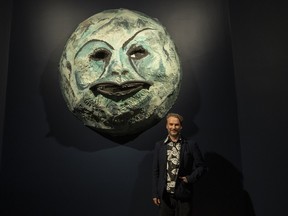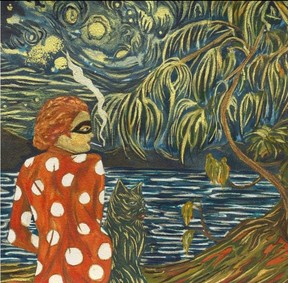
Reviews and recommendations are unbiased and products are independently selected. Postmedia may earn an affiliate commission from purchases made through links on this page.
Article content
Like everyone who has studied art in Canada, Marcel Dzama was well-versed when it came to the work of the Group of Seven while studying at the University of Manitoba.
At least academically.
The collective of Canadian landscape painters, who worked in the early 20th century, is inescapable for art students and Dzama admits he was not particularly interested in them when he was an art student. After he co-founded another influential group of seven in the 1990s, the famous Royal Art Lodge, the comparisons were rampant even though the two collectives shared little common ground stylistically.
Advertisement 2
Article content
“When I was in art school, I was trying to rebel against the past, just because that’s all you would hear about: The Group of Seven,” says Dzama.
Since leaving school and heading to New York, Dzama has become a world-renowned artist — Galleries West calls him a “bonafide arts star” — whose work hangs in major galleries and in the collections of celebrities such as Brad Pitt and Steve Martin.
But seven years ago, Dzama found himself thinking about the Group of Seven and his home, which eventually led to Ghosts of Canoe Lake: New Work by Marcel Dzama. Originating at the McMichael Canadian Art Collection in Vaughn, Ont., just outside of Toronto, the exhibit marks the artist’s first return in a decade to the Canadian institutional art scene.
On display at Contemporary Calgary until Oct. 24, there is a distinctly Canadian feel to Ghosts of Canoe Lake, a striking collection of surreal figures and landscapes that make direct allusions to art history and Dzama’s memories of growing up in Winnipeg and Saskatchewan.
It began when McMichael’s director and chief curator Sarah Milroy approached Dzama about creating a new exhibit, although she initially had something very different in mind.
Article content
Advertisement 3
Article content

“She was proposing a show of political artwork,” Dzama says. “It was a time of COVID, Donald Trump and all that stuff and I had done a bunch of political work. I was so tired of politics by that point and I was able to go back to Winnipeg and see my relatives again. I was thinking I wanted more celebration, a more hopeful kind of feeling. I started getting into the Group of Seven at that point, which I had kind of ignored in my youth because I was trying to be new or whatever and not reference what had happened.before.”
The work includes paintings, sculptures and film, including one based on a screenplay by Spanish poet Federico Garcia Lorca called To Live on the Moon (For Lorca), which is central to the exhibit.
Lorca is just one of many artists and inspirations that appear in Dzama’s artwork. In We Can Not Abandon Such Beauty, a recurring masked figure adorned in polka-dots stands on the shore of a lake with an owl. The polka-dot motif is a direct reference to Dadaist artist Francis Picabia. In the portrait Defiant Spirit Once More, Dzama offers his take on Group of Seven painter Lawren Harris’s famous portrait of his wife, Bess. In Waiting on Tom’s Ghost, the artist depicts a figure inspired by his grandmother, again in polka-dots and smoking a cigarette on the shore of a lake. The Tom in question is Group of Seven landscape artist Tom Thomson, whose landscape work is echoed in Dzama’s painting.
Advertisement 4
Article content

The exhibit doesn’t completely revolve around the past. Some paintings depict urgent environmental concerns. The Lady of Fire features a red-dressed woman luxuriating in an inferno, which was inspired by devastating wildfires in Canada and the U.S. in the summer of 2023.
The dystopian After The Fire Before The Flood also features wildfires and flood waters. But, again, Thomson appears. In fact, Thomson is a figure in several paintings, often depicted during or after his drowning. It’s a reference to Thomson’s real-life mysterious demise in 1917 in Canoe Lake. Conspiracy theories have often surrounded the death, including unsubstantiated theories that the painter was murdered or committed suicide. It provided deep themes for Dzama to explore.
“It’s that whole mythology of Canadian identity in the art world, I like that as well: That beginning at that point,” he says. “Before that, people just looked to Europe for (art history). (Canada) has its own identity that is interesting.”
Ghosts of Canoe Lake: New Work by Marcel Dzama is at Contemporary Calgary until Oct. 27.
Article content






